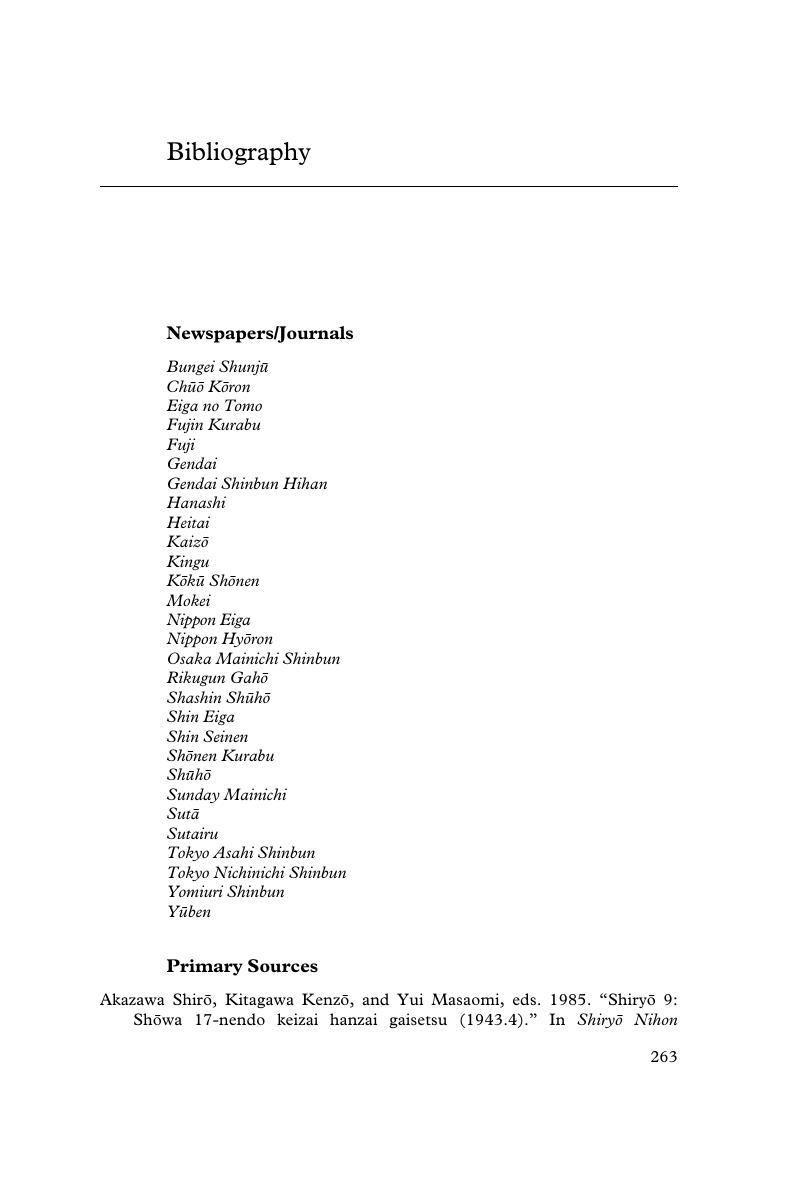Bibliography
Published online by Cambridge University Press: 01 March 2019
Summary

- Type
- Chapter
- Information
- Japan's Carnival WarMass Culture on the Home Front, 1937–1945, pp. 263 - 276Publisher: Cambridge University PressPrint publication year: 2019



